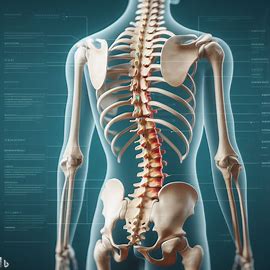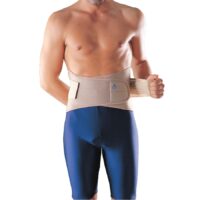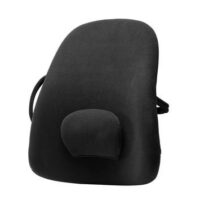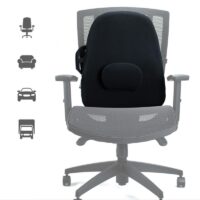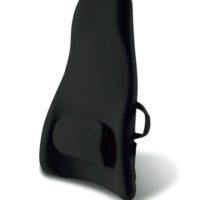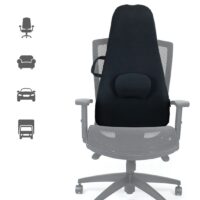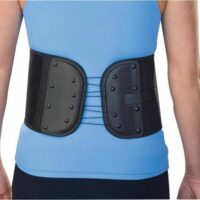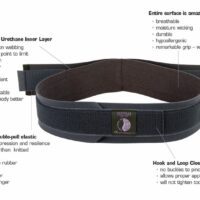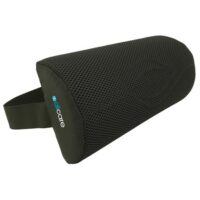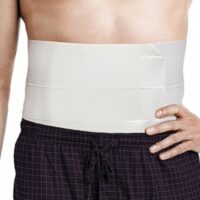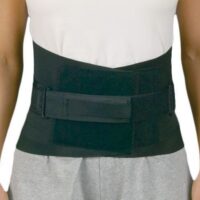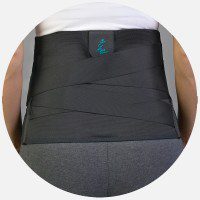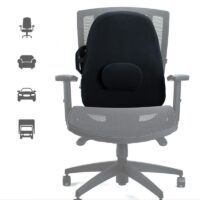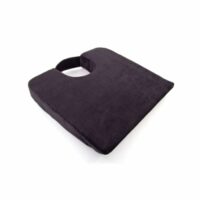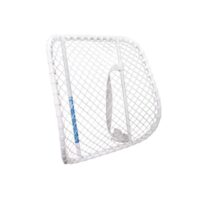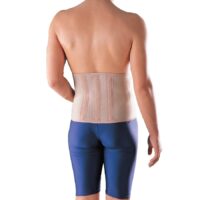Degenerative Disc Disease
Article by John Miller

Degenerative Disc Disease and Physiotherapy Management
What is Degenerative Disc Disease?
Degenerative Disc Disease (DDD) reflects the natural ageing of the spine. As time progresses, the discs cushioning the vertebrae wear down, leading to this condition. The discs’ nucleus, a gel-like core, loses hydration, compromising flexibility. Concurrently, the annulus, the outer layer, may tear or crack, diminishing the spine’s shock-absorbing capabilities and potentially causing pain.
Lifestyle choices and certain activities can accelerate DDD. Smoking, carrying excess weight, and enduring spinal strain through occupational tasks or injury all contribute to the condition’s progression.
Risk Factors for DDD
Understanding the risk factors for DDD is crucial. Excess weight burdens the spine, hastening disc wear. Genetics play a role, too, with a family history sometimes indicating a predisposition to early DDD. Jobs that involve heavy lifting or vibrations, and even vigorous activities like running or sports, can also contribute to the risk. However, maintaining a healthy weight and good spinal health can mitigate these risks. Previous disc injuries such as a disc bulge or herniation will fast track DDD.
Recognising Symptoms of DDD
Symptoms of DDD range from dull aches to acute pain and may extend to the hips or legs. The pain often worsens with movements like bending or lifting and may improve upon changing positions. Tingling or numbness might also occur if nerves are affected. Sciatica may present as the disc narrows.
Diagnosing DDD
Diagnosing DDD involves MRI scans or X-rays to visualise disc degeneration. However, not all ageing discs cause symptoms, making a comprehensive physical assessment critical to pinpointing the pain source.
Physiotherapy’s Role in Managing DDD
Conservative treatment through physiotherapy often successfully manages DDD symptoms. Tailored programs focus on pain management, restoring motion, and preventing future episodes.
Pain Relief and Protection
Initial treatment aims to alleviate pain. Techniques include ice therapy, stretches, and soft tissue massage. Anti-inflammatory medications may also be prescribed.
Restoring Normal Motion and Strength
As pain subsides, treatment shifts to restoring joint alignment and muscle strength. Core stability exercises reinforce the muscles supporting the spine.
Regaining Full Function
Physiotherapists guide patients through movements and postures to regain full spinal function, incorporating core and leg strength exercises tailored to individual goals.
Preventing Recurrence
An ongoing routine of core exercises is essential to prevent back pain recurrence. Therapists may recommend pilates, yoga, or swimming to keep the spine healthy long-term.
Conclusion: Take Charge of Your Spinal Health
If DDD is impacting your life, it’s time to take control. Consult with a physiotherapist to develop a customised treatment plan. With the right approach, you can manage symptoms, restore your spine’s functionality, and pave the way for a pain-free future. Don’t let DDD dictate your quality of life. Seek professional guidance and support to maintain a healthy, active lifestyle.
More Back Pain Info
Rochedale - Call 38410277
Book Online: RochedaleSalisbury - Call 32751044
Book Online: SalisburySandgate - Call 32691122
Book Online: SandgateWhat Causes Lower Back Pain?
Introduction
Lower back pain is a widespread issue in Australia, stemming from diverse conditions. As physiotherapists, we often encounter various causes of this pain. This guide aims to shed light on these causes and provide valuable insights for effective management.
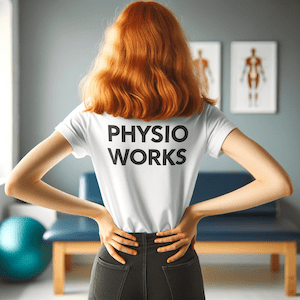

Muscle-Related Injuries
Muscle injuries are a predominant cause of lower back pain, including:
- Back Cramps and Muscle Pain: Typically resulting from overuse or strain.
- Core Stability Deficiency: Weak core muscles can lead to increased back strain.
- DOMS (Delayed Onset Muscle Soreness): Soreness affecting back muscles post-exercise.
Recent research underscores the importance of regular exercise and core strengthening in preventing these injuries.
Bone-Related Injuries
Bone health is crucial in lower back pain, encompassing conditions like:
- Spondylosis: Degenerative spine conditions.
- Spondylolysis or Stress Fracture: Common in athletes, such as cricket bowlers.
- Spondylolisthesis: Occurs when a vertebra slips over another.
- Osteoporosis: Causes bones to weaken, increasing fracture risk. Advancements in bone density scanning have improved early detection and management.
- Scheuermann’s Disease: Affects spinal bone growth in teenagers.
- Scoliosis: An abnormal curvature of the spine causing pain.
- Spinal Stenosis: A narrowing of the spinal canal leading to nerve compression.
Disc-Related Injuries
Spinal discs are vital for spinal health:
- Bulging and Disc Protrusions: These discs protrude or "slip" and can press on nerves.
- Herniated Disc: A more severe form of disc protrusion.
- Degenerative Disc Disease: Age-related disc wear and tear.
Minimally invasive surgical techniques have transformed the treatment of severe disc-related injuries where physiotherapy and other non-operative options fail to improve.
Back Joint Injuries
- Facet Joint Pain: Arises from arthritis or stress on these spinal joints.
Nerve-Related Injuries
Nerve issues can lead to:
- Nerve Pain and Pinched Nerves: Caused by spinal nerve compression from disc bulging or arthritic changes.
- Sciatica: Irritation of the sciatic nerve.
Physiotherapy and newer medications have been effective in managing these conditions. Some will require injection therapies or surgery.
Pelvis-Related Injuries
Pelvic issues also contribute to lower back pain:
- Sacroiliac Joint Pain: Involving joints connecting the spine to the pelvis.
- Piriformis Syndrome: Where the piriformis muscle irritates the sciatic nerve.
Pregnancy-Related Pain
- Pregnancy Back Pain: Often due to increased back strain during pregnancy. Prenatal physiotherapy programs are beneficial.
Systemic Diseases
Systemic diseases like Ankylosing Spondylitis, Fibromyalgia and Rheumatoid Arthritis can cause back pain.
Recent Research and Advancements
Current research emphasises a holistic approach to treating lower back pain. Techniques like yoga and Pilates, alongside traditional physiotherapy, and conservatively progressed gym programs show significant relief. The role of diet in managing weight and inflammation is increasingly recognised.
Best Treatments for Lower Back Pain
Treatment varies but often includes:
- Physiotherapy
- Pain management
- Strength and flexibility exercise programs
- Ergonomic adjustments
- Surgical interventions for severe cases
Conclusion
Lower back pain is a significant health concern in Australia. Understanding its causes and seeking professional physiotherapy advice can greatly improve life quality. Remember, early intervention is key for an effective recovery.
What to Do?
If you're experiencing lower back pain, it's vital to consult a physiotherapist or doctor. They can provide an assessment and customised treatment plan based on your specific condition.
Rochedale - Call 38410277
Book Online: RochedaleSalisbury - Call 32751044
Book Online: SalisburySandgate - Call 32691122
Book Online: SandgateBack Pain FAQs: What to Do? When?
Back pain is one of the most common health concerns, affecting countless Australians every year. Whether it's a dull ache or a sharp pain, back pain can significantly impact your quality of life. In this FAQ, we'll explore why back pain occurs, how it can be treated, and what steps you can take to prevent it. Each section below includes helpful links to more detailed articles on our website, making it easy to find the information you need.
Why Does Back Pain Occur?
Back pain can result from various causes, including muscle strains, herniated discs, or underlying health conditions. Understanding the root cause of your pain is crucial in determining the most effective treatment.
- Most Common Causes of Severe Back Pain
Discover the primary reasons behind back pain and how they affect your daily life. Learn more about severe back pain causes. - Causes of Lower Back Pain
Learn about the specific factors contributing to lower back pain and how to address them. Explore the causes of lower back pain. - Causes of Upper Back Pain
Upper back pain can be particularly challenging. Find out what's causing your discomfort and how to alleviate it. Find out more about upper back pain.
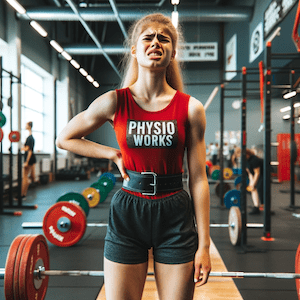

How Can Back Pain Be Treated?
A variety of treatments can help alleviate back pain, from physiotherapy to targeted exercises. Knowing your options is the first step toward effective relief.
- Best Treatment for Lower Back Pain
Discover the most effective treatments for alleviating lower back pain. Check out the best back treatments. - Physiotherapy for Back Pain
Physiotherapy offers a comprehensive approach to managing and reducing back pain. Learn about physiotherapy options. - Exercises for Back Strength
Strengthening your back through exercise is key to both treatment and prevention. Discover back-strengthening exercises.
What Are the Prevention Tips for Back Pain?
Preventing back pain before it starts is often the best strategy. Incorporating healthy habits into your daily routine can make a world of difference.
- Preventing Back Pain Tips
Simple lifestyle changes can significantly reduce your risk of back pain. Read back pain prevention tips. - Proper Back Posture Guidelines
Maintaining good posture is essential in preventing back pain. Understand proper posture. - Regular Exercise Routines for Back Pain
Consistent exercise can keep your back healthy and pain-free. Find back exercise routines.
When Should You See a Physio or Doctor for Back Pain?
It's important to know when back pain requires professional help. Recognising the signs can lead to more effective treatment and a quicker recovery.
- Severe Back Pain? Causes, Symptoms & Treatment
Identify severe back pain symptoms and the appropriate treatments. Learn about severe back pain. - Warning Signs of Severe Back Conditions
Some back pain signals a more serious condition. Learn when to seek medical attention. Recognise warning signs. - Physiotherapy Consultation for Back Pain: What to Expect?
Understand what happens during a physiotherapy consultation for back pain. What to expect at your physio consultation.
What Can Be Done for Repeated Bouts & Incidental Back Pain?
Recurring back pain can be particularly frustrating. By understanding the underlying causes, you can take steps to manage and prevent future episodes.
- Causes of Recurrent Back Strains
Learn why back strains keep coming back and how to stop them. Explore recurrent back strain causes. - What Causes Repeat Low Back Strains & Sprains?
Repeated low back issues can stem from various factors. Understanding these can help in managing the pain. Find out more about low back strains.
Conclusion
Arming yourself with knowledge about back pain can empower you to make informed decisions about your health. Whether you’re experiencing pain now or want to prevent it in the future, taking proactive steps can make all the difference.


Rochedale - Call 38410277
Book Online: RochedaleSalisbury - Call 32751044
Book Online: SalisburySandgate - Call 32691122
Book Online: SandgateCommon Back Pain FAQs
- Why does back pain occur?
Back pain can occur due to muscle strains, herniated discs, or underlying medical conditions. Identifying the cause is essential for effective treatment. - How can I treat back pain at home?
Mild back pain can often be managed with rest, gentle exercise, and over-the-counter pain relievers. Physiotherapy is recommended for ongoing issues. - What are the best exercises for back pain?
Strengthening exercises like planks, bridges, and gentle stretching can help prevent and reduce back pain. Consult a physiotherapist for personalised advice. - When should I see a doctor for back pain?
Seek medical attention if your back pain is severe, persistent, or accompanied by symptoms like numbness, tingling, or weakness in the legs. - What are the most common causes of lower back pain?
Lower back pain is often caused by poor posture, lifting heavy objects, or sitting for long periods. Muscle imbalances and herniated discs can also be factors. - Can physiotherapy help with back pain?
Yes, physiotherapy can significantly reduce back pain by improving mobility, strengthening muscles, and addressing the root causes of pain.
Related Articles:
- Causes of Lower Back Pain: Discover the common causes and symptoms of lower back pain.
- Best Treatment for Lower Back Pain: Explore the most effective treatment options for lower back pain.
- Physiotherapy for Back Pain: Learn how physiotherapy can provide relief for back pain sufferers.
- Exercises for Back Strength: Strengthen your back with these targeted exercises.
- Preventing Back Pain Tips: Tips on how to prevent back pain before it starts.
- Understanding Herniated Discs: Learn about herniated discs and how they cause back pain.
- Benefits of Back Massage: Explore the therapeutic benefits of back massage.
- Severe Back Pain? Causes, Symptoms & Treatment: Identify and treat severe back pain effectively.
- Proper Back Posture Guidelines: Improve your posture to reduce back pain.
- Walking and Back Pain: Understand the impact of walking on your back health.
- Back Pain - This Mayo article discusses the symptoms, causes, and treatments for back pain.
- Understanding Back Pain - WebMD offers a comprehensive guide to understanding back pain, including treatment options and prevention strategies.
- Back Pain Overview - Healthline provides an overview of back pain, its causes, treatments, and prevention tips.


